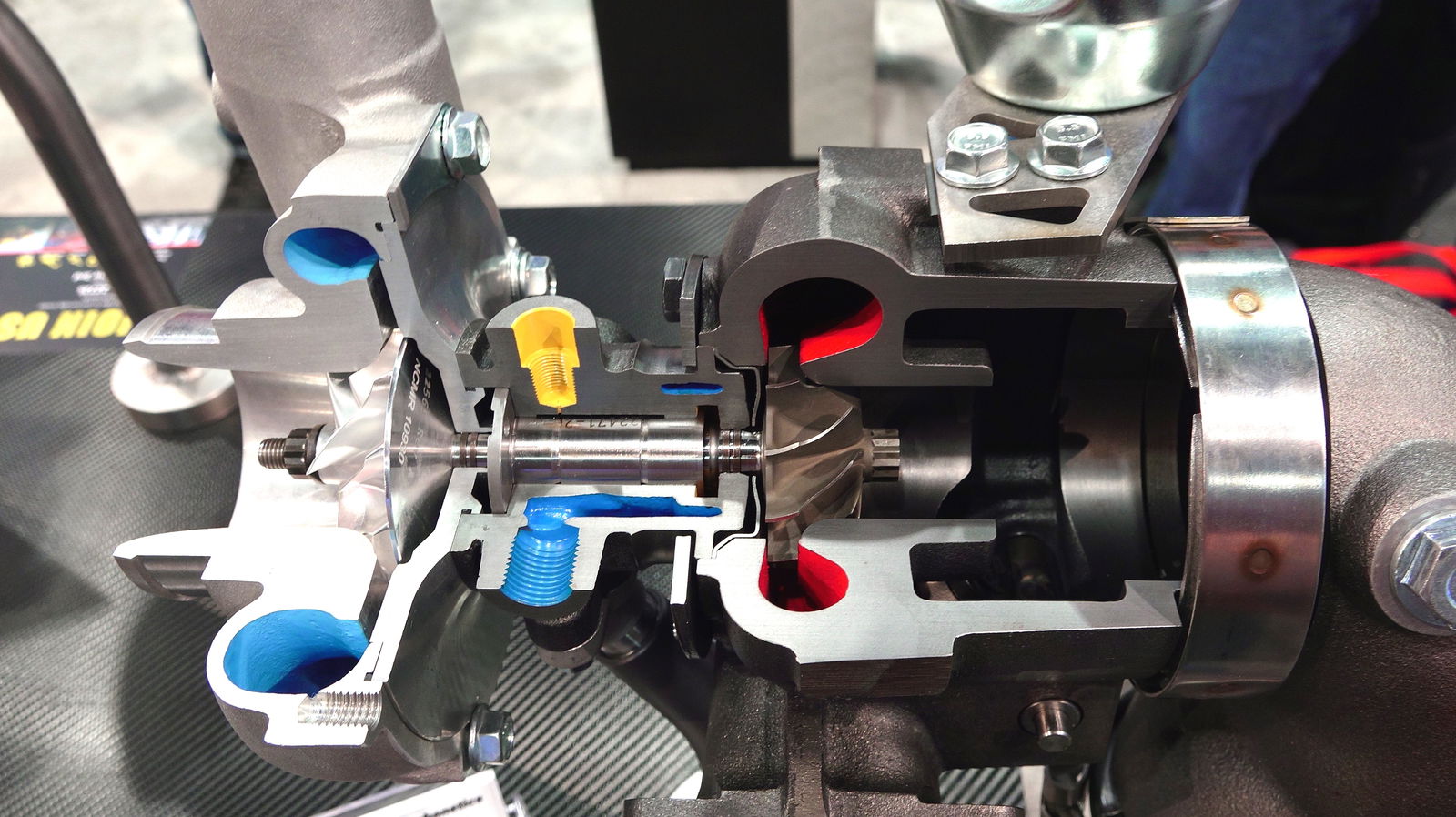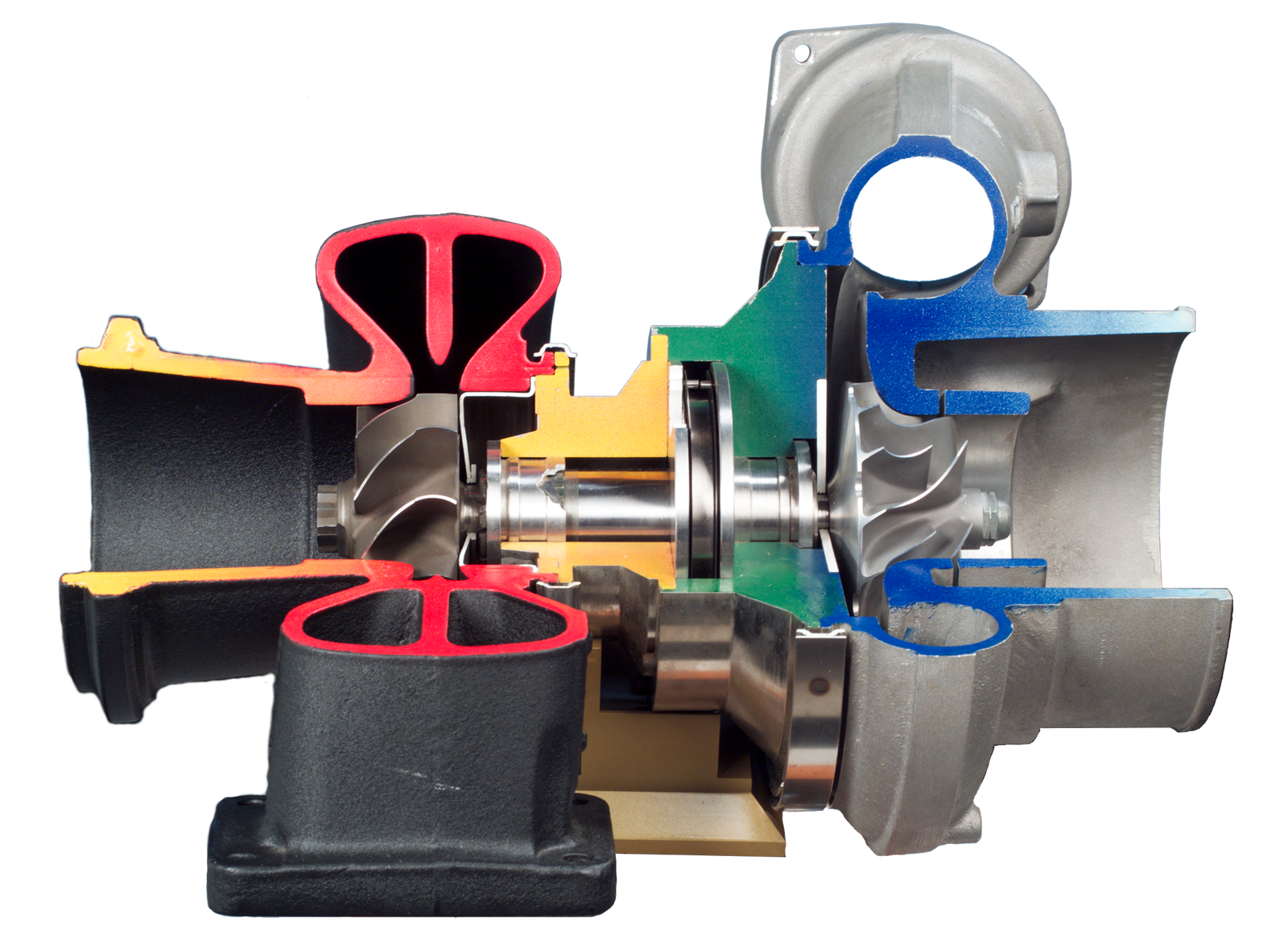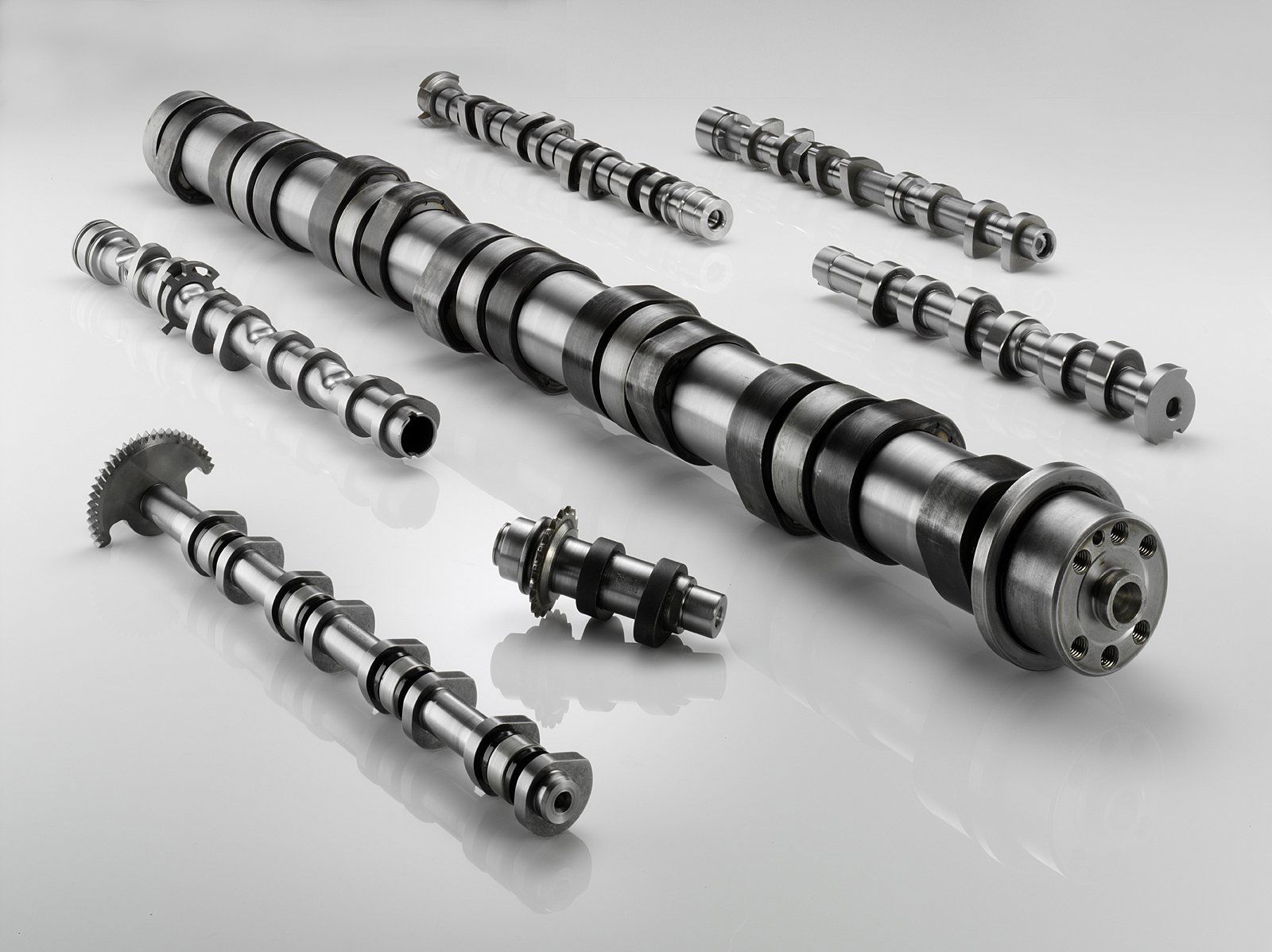Engineering Explained: 6 Different Types Of Turbocharger And The Advantages Of Each Setup

The world of turbocharging has about as much variety as engine layouts. Let’s take a look at the different styles:
- Single-Turbo
- Twin-Turbo
- Twin-Scroll Turbo
- Variable Geometry Turbo
- Variable Twin Scroll Turbo
- Electric Turbo
1. Single-Turbo

Single turbochargers alone have limitless variability. Differing the compressor wheel size and turbine will lead to completely different torque characteristics. Large turbos will bring on high top-end power, but smaller turbos will provide better low-end grunt as they spool faster. There are also ball bearing and journal bearing single turbos. Ball bearings provide less friction for the compressor and turbine to spin on, thus are faster to spool (while adding cost).
Advantages
- Cost effective way of increasing an engine’s power and efficiency.
- Simple, generally the easiest of the turbocharging options to install.
- Allows for using smaller engines to produce the same power as larger naturally-aspirated engines, which can often remove weight.
Disadvantages
- Single turbos tend to have a fairly narrow effective RPM range. This makes sizing an issue, as you’ll have to choose between good low-end torque or better high-end power.
- Turbo response may not be as quick as alternative turbo setups.
Just like single turbochargers, there are plenty of options when using two turbochargers. You could have a single turbocharger for each cylinder bank (V6, V8, etc). Alternatively, a single turbocharger could be used for low RPM and bypass to a larger turbocharger for high RPM (I4, I6, etc). You could even have two similarly sized turbos where one is used at low RPM and both are used at higher RPM. On the BMW X5 M and X6 M, twin-scroll turbos are used, one on each side of the V8.
Advantages
- For parallel twin turbos on ‘V’ shaped engines, the benefits (and drawbacks) are very similar to single turbo setups.
- For sequential turbos or using one turbo at low RPM and both at high RPM, this allows for a much wider, flatter torque curve. Better low-end torque, but the power won’t taper at high RPM like with a small single turbo.
Disadvantages
- Cost and complexity, as you’ve nearly double the turbo components.
- There are lighter, more efficient ways of achieving similar results (as discussed below).
Twin-scroll turbochargers are better in nearly every way than single-scroll turbos. By using two scrolls, the exhaust pulses are divided. For example, on four cylinder engines (firing order 1-3-4-2), cylinders 1 and 4 might feed to one scroll of the turbo, while cylinders 2 and 3 feed to a separate scroll. Why is this beneficial? Let’s say cylinder 1 is ending its power stroke as the piston approaches bottom dead centre, and the exhaust valve starts to open. While this is happening, cylinder 2 is ending the exhaust stroke, closing the exhaust valve and opening the intake valve, but there is some overlap. In a traditional single-scroll turbo manifold, the exhaust pressure from cylinder 1 will interfere with cylinder 2 pulling in fresh air since both exhaust valves are temporarily open, reducing how much pressure reaches the turbo and interfering with how much air cylinder 2 pulls in. By dividing the scrolls, this problem is eliminated.

Advantages
- More energy is sent to the exhaust turbine, meaning more power.
- A wider RPM range of effective boost is possible based on the different scroll designs.
- More valve overlap is possible without hampering exhaust scavenging, meaning more tuning flexibility.
Disadvantages
- Requires a specific engine layout and exhaust design (eg: I4 and V8 where 2 cylinders can be fed to each scroll of the turbo, at even intervals).
- Cost and complexity versus traditional single turbos.
Perhaps one of the most exceptional forms of turbocharging, VGTs are limited in production (though fairly common in diesel engines) as a result of cost and exotic material requirements. Internal vanes within the turbocharger alter the area-to-radius (A/R) ratio to match the RPM. At low RPM, a low A/R ratio is used to increase exhaust gas velocity and quickly spool up the turbocharger. As the revs climb, the A/R ratio increases to allow for increased airflow. The result is low turbo lag, a low boost threshold, and a wide and smooth torque band.
Advantages
- Wide, flat torque curve. Effective turbocharging at a very wide RPM range.
- Requires just a single turbo, simplifying a sequential turbo setup into something more compact.
Disadvantages
- Typically only used in diesel applications where exhaust gases are lower so the vanes will not be damaged by heat.
- For gasoline applications, cost typically keeps them out as exotic metals have to be used in order to maintain reliability. The tech has been used on the Porsche 997, though very few VGT gasoline engines exist as a result of the cost associated.
Could this be the solution we’ve been waiting for? While attending SEMA 2015 I stopped by the BorgWarner booth to look into the latest in turbocharging, among the concepts is the variable twin-scroll turbo as described in the video above.
Advantages
- Significantly cheaper (in theory) than VGTs, thus making an acceptable case for gasoline turbocharging.
- Allows for a wide, flat torque curve.
- More robust in design versus a VGT, depending on the material selection.
Disadvantages
- Cost and complexity versus using a single turbo or traditional twin-scroll.
- The technology has been played with before (eg: quick spool valve) but doesn’t seem to catch on in the production world. There are likely additional challenges with the technology.
Throwing a powerful electric motor in the mix eliminates nearly all of the drawbacks of a turbocharger. Turbo lag? Gone. Not enough exhaust gases? No problem. Turbo can’t produce low-end torque? Now it can! Perhaps the next phase of modern turbocharging, there are undoubtably drawbacks of the electric path as well.
Advantages
- By directly connecting an electric motor to the compressor wheel, turbo lag and insufficient exhaust gases can be virtually eliminated by spinning the compressor with electric power when needed.
- By connecting an electric motor to the exhaust turbine, wasted energy can be recovered (as is done in Formula 1).
- A very wide effective RPM range with even torque throughout.
Disadvantages
- Cost and complexity, as you now must account for the electric motor and ensure it remains cool to prevent reliability issues. That goes for the added controllers as well.
- Packaging and weight become an issue, especially with the addition of a battery on board, which will be necessary to supply sufficient power to the turbo when needed.
- VGTs or twin-scrolls can offer very similar benefits (though not at quite the same level) for a significantly lower cost.

Comments
But…………superchargers are better.
waits for the hate comments
Damn, cars are really complicated. Your posts are brilliant and you’re a genius. Thanks for explaining all of the car mechanics
I cant be the only one who reads this with his voice
Thank you
I really hoped that the last one would be a troll and you would hate on these:
Variable Twin-Scroll Turbocharger… yup I need this in my life
It would be far more efficient to mount electric motors to the front wheels than charging the inlet. (Think about all the conversion losses). However it seems that Audi and Ferrari are already working on the electric inlet turbo charger.
And what about those belt-driven turbos? Like Procharger ones?
You just forgot to mention the biggest (to me) evolution of turbocharging, the 2015 Le Mans winning layout made by Honewell. The Twin entry layout was well known from ages, but the turbine side layout is pretty new and clever. https://www.youtube.com/watch?v=Gz0qZpxXnLg
TWIN SCROLL MASTERRACE
Pagination